Comparing Incandescent vs LED Light Bulbs: Efficiency, Brightness, Luminous Efficacy May 13, 2024 – Posted in: Home Lighting, Lighting Information
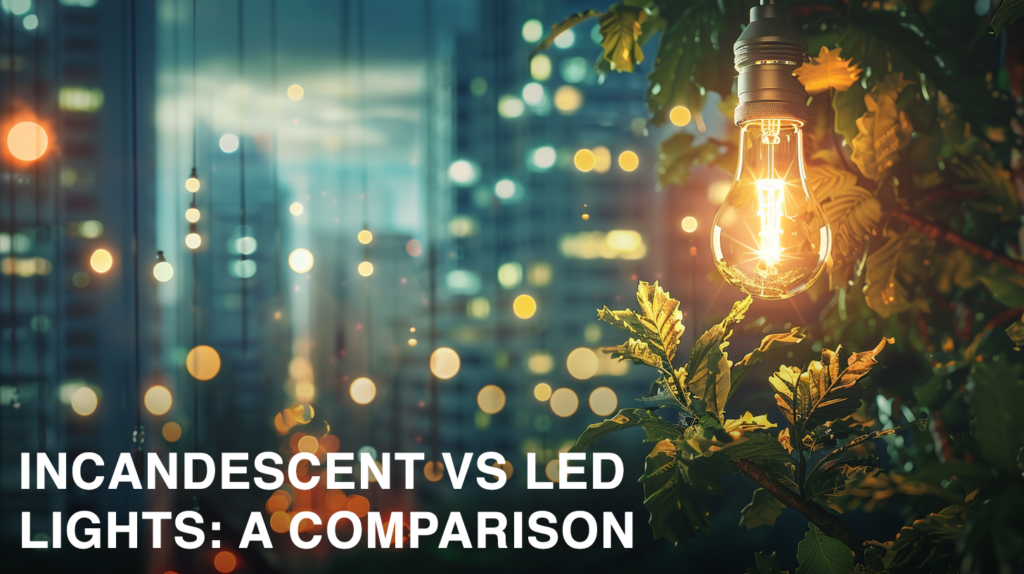
Table of Contents
Incandescent vs LED Lights Comparison Chart
We’ve put together a handy comparison chart to help you understand the differences between incandescent and LED lights:
| Feature | Incandescent Lights | LED Lights |
|---|---|---|
| Energy Efficiency | Low (10-20 lumens per watt) | High to Very High (90-210+ lumens per watt) |
| Lifespan | Short (750-2,000 hours) | Long (25,000-50,000+ hours) |
| Heat Emission | High (90% of energy is heat) | Low (10% of energy is heat) |
| Durability | Fragile (easily broken) | Sturdy (resistant to breakage) |
| Color Rendering Index (CRI) | 100 (best possible) | Typically 80-95 (very good to excellent) |
| Dimming Capability | Yes (smooth dimming) | Yes (may require special dimmers) |
| Upfront Cost | Low ($1-$2 per bulb) | Higher ($1-$5 per bulb) |
| Long-term Cost Savings | Low (frequent replacements) | High (energy savings & longevity) |
If you’re looking for the a good comparison of LED bulbs, here is a GREAT video that we’ve posted in the past from The Hookup on Youtube:
LED vs. Incandescent Lighting: A Comparative Analysis
The greatest invention of the 19th century was the invention of the method of invention. – Alfred North Whitehead
We’ll compare LED and incandescent lighting to understand their differences. Incandescent bulbs produce light by heating a filament until it glows, wasting a lot of energy as heat.
LED bulbs use a semiconductor diode to emit light when an electric current passes through it. This makes LEDs up to 90% more efficient than incandescent bulbs. LEDs also last much longer, with some rated for 25,000 hours compared to about 1,000 hours for incandescent bulbs. Keep in mind that typically the LED driver fails first while the LED chips themselves still work.
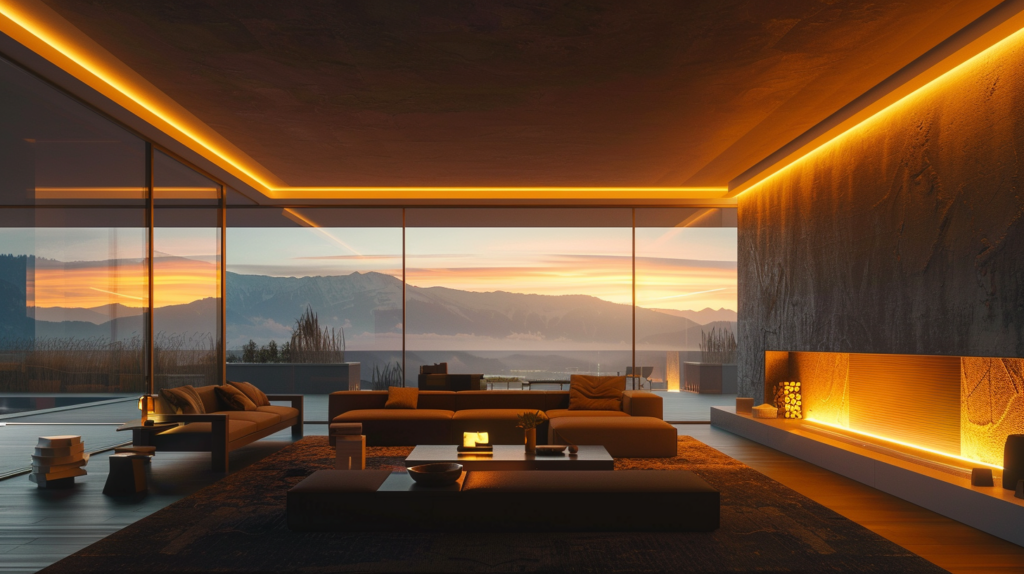
LEDs offer more flexibility in color and design options. They come in a wide range of colors and can be dimmed. Incandescent bulbs are limited to warmer colors and are less efficient when dimmed.
LEDs also provide more directed light, while incandescent bulbs emit light in all directions. This means LEDs are better for task lighting. Overall, LED technology has significant advantages over traditional incandescent lighting in terms of energy efficiency, lifespan, and versatility.
Brightness Levels: LED vs. Incandescent
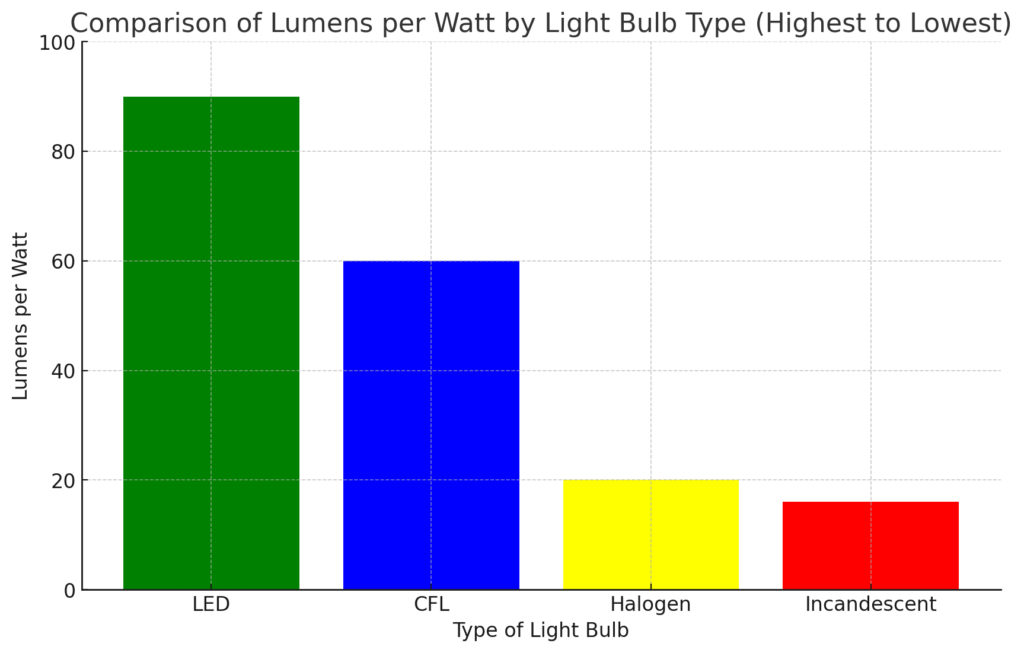
For instance, a 10-watt LED lamp can emit the same amount of light as a 60-watt incandescent bulb. This means that we can enjoy the same level of illumination in our homes and offices with LED lighting while using only a fraction of the electricity.
Moreover, LED bulbs offer greater flexibility in terms of color temperature and design options. We can select from a wide range of hues, from warm white to cool white, depending on our preferences and the ambiance we wish to create in a space.
LED lamps also come in various shapes and sizes, allowing us to find the perfect fit for any fixture or application. Whether we need a traditional A-shaped bulb, a globe, or a candle-style lamp, LED technology has us covered without compromising on brightness or efficiency.
Efficiency of LED vs Incandescent Lights

LED lights outshine incandescent bulbs in terms of energy efficiency. We can compare a 60W incandescent bulb to a 12W LED bulb – the LED converts 80-90% of its energy into light, while the incandescent only manages a 10% efficiency rating.
That means for the same brightness, the LED bulb sips a mere 12 watts of power while the incandescent guzzles down 60 watts.
Beyond just consuming less electricity, LEDs also last much longer. A quality LED light can illuminate our homes for 25,000 to 50,000+ hours – that’s 25 to 50 times longer than a standard incandescent bulb.
By swapping out those old Edison bulbs for cutting-edge LEDs, we can save money on our utility bills and reduce our environmental impact, all while enjoying highly flexible lighting.
Flexibility in Color and Design: LED vs. Incandescent Options
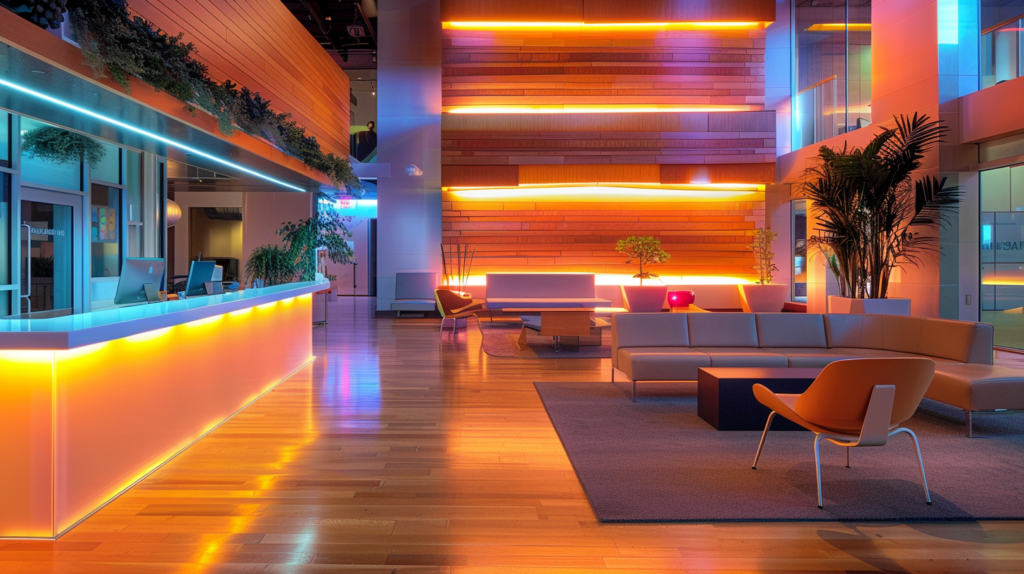
We find that LEDs provide much greater flexibility in color and design compared to traditional incandescent lighting. LED bulbs and fixtures come in a wide variety of shapes, sizes, and colors, allowing us to get creative with lighting arrangements and effects.
We can choose from cool to warm white tones and even RGB color-changing options to set the perfect mood or ambience in a room. There are even Bi-Color Tunable LED chips on the market now.
In contrast, incandescent bulbs are limited in their design and color possibilities. They typically only produce a warm yellowish glow and come in a few standard shapes like A-lamps, candelabra, and flood lights.
While these classic bulbs have their charm, they don’t give us the same versatility as their LED counterparts to customize the light in our homes and workspaces to suit our style and needs just due to their size.
With LEDs, the options are virtually endless to add practical yet attractive lighting accents, many form factors, and literal flexibility.
Diffused vs Direct Light
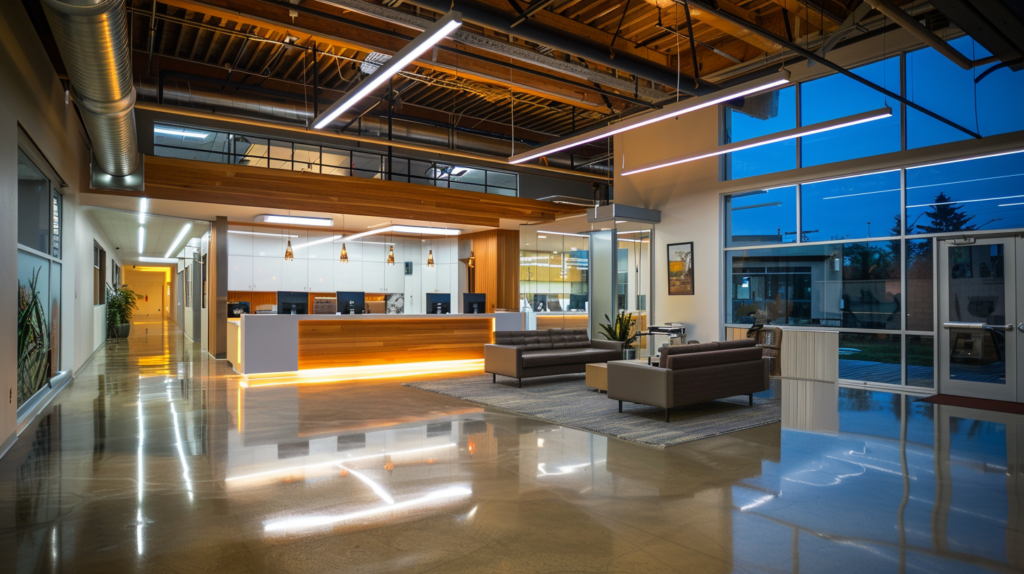
We often overlook a crucial factor when selecting light bulbs: the nature of the light they emit. Incandescent bulbs produce diffused light that spreads evenly in all directions, creating a soft and warm ambiance.
This omnidirectional glow is ideal for general lighting in living rooms, bedrooms, and dining areas. On the flip side, LEDs emit direct light, focusing illumination in a specific direction.
This targeted brightness works wonders for task lighting, such as reading lamps, under-cabinet lights, and spotlights that highlight artwork or architectural features.
The distinct characteristics of diffused and direct light influence our choice of fixtures and bulbs for different purposes. In spaces where we desire a cozy and inviting atmosphere, like a family room or a cozy nook, the gentle radiance of dimmable bulbs or LED bulbs with frosted covers creates a soothing ambiance.
However, for areas that demand bright and focused light, such as a home office or a kitchen workspace, the precise beams of LED bulbs provide optimal visibility without straining our eyes.
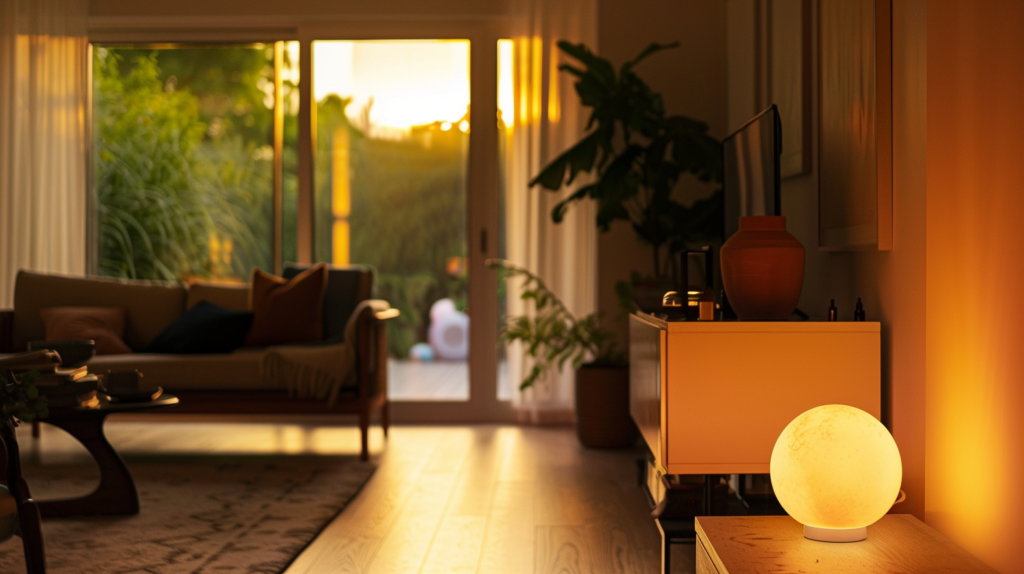
FAQs
What is the main difference between LED and incandescent lighting in terms of energy efficiency?
LED light bulbs are much more energy-efficient compared to incandescent bulbs. LEDs consume less energy and produce more visible light, while incandescents are inefficient, converting most of their energy into heat.
How do LEDs and incandescent bulbs differ in their light quality and color?
LEDs emit a bright, white light that closely resembles natural daylight. They offer better light quality compared to the warm, yellowish glow of traditional incandescent bulbs. LEDs are available in various color temperatures to suit different preferences and applications.
What is the lifespan comparison between LED, CFL, and incandescent bulbs?
LED bulbs last up to 10 times longer than CFL bulbs and 25 times longer than incandescent lamps. This extended lifespan reduces the need for frequent replacements, making LEDs a cost-effective and environmentally friendly choice for both homes and businesses.
How do LED, CFL, and incandescent bulbs differ in their energy consumption?
LEDs have the lowest energy consumption among the three lighting technologies. They use significantly less wattage compared to incandescent bulbs while providing equivalent or better light output. CFLs fall in between, being more efficient than incandescents but less so than LEDs.
Are there any safety advantages of using LED bulbs over incandescent or CFL bulbs?
Yes, LED bulbs produce much less heat compared to incandescent and CFL bulbs, reducing the risk of fire or burn injuries. They also do not contain mercury, making them safer to handle and dispose of than CFLs.
How have advancements in LED technology impacted their efficiency and adoption?
Over the years, LED technology has made significant strides in terms of energy efficiency, light quality, and affordability. Modern LED bulbs are more efficient, longer-lasting, and cost-effective than ever before, leading to increased adoption in various applications, from household lighting to traffic lights and beyond.
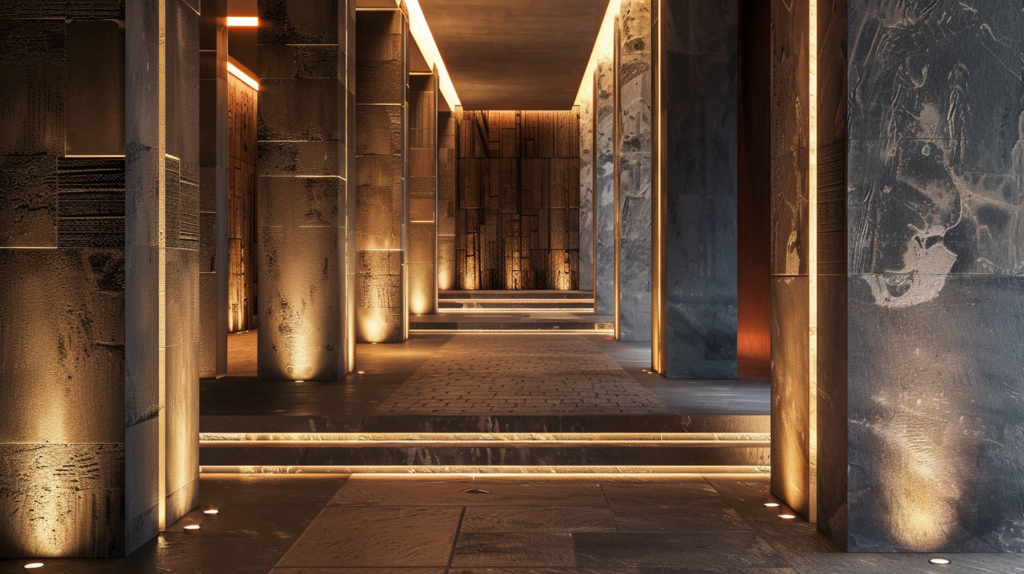
I have been the project manager for Modern.Place since early 2016, spending three of those years working overseas on the manufacturing & procurement side of the LED lighting industry. Constantly learning and passing on knowledge to others while excited for what the lighting industry will involve into next.



1 Comment
MoonshineDlite November 11, 2024 - 19:06
LED lights make nice homes look like a FoxxConn factory floor. Incandescent are superior in enjoyment in almost every way unless you’re setting up a video game arcade.